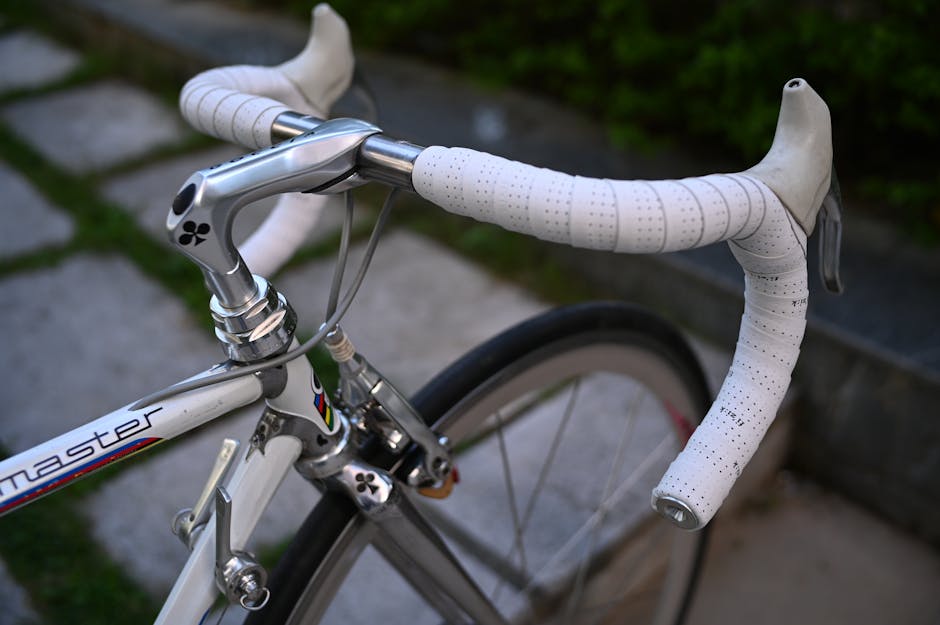Warming Up Like a Pro
Pro gamers don’t just log in and click heads. Before queueing into ranked or scrims, they prep their bodies and brains with the same seriousness as traditional athletes.
First up: hand and wrist stretches. Sounds basic, but ask any veteran who’s dealt with tendonitis or carpal tunnel it’s mandatory. Controlled motions to loosen wrists, flex fingers, and reduce stiffness aren’t optional anymore. The goal is simple: keep injuries out of the way so the games stay sharp.
Next is sharpening the mind. Reaction time drills and cognitive warm ups are routine fast paced clicking tests, aim trainers, even eye tracking exercises. Warming up mentally helps shake off grogginess and calibrate focus for the high speed demands of play. A sluggish opener can cost rounds. Teams know it. That’s why warmups are baked into every schedule.
Nutrition and hydration round out the start. No, that doesn’t mean crushing energy drinks and skipping meals. Balanced carbs, lean protein, and stable hydration keep energy steady and decision making clean. It’s not glamorous, but the right snack at the right time means fewer crashes mid set and better endurance across long sessions.
This kind of prep used to be rare. Now, it’s the standard. The margin for sloppiness is gone. If you want pro level results, you need a pro level warm up.
Practice Blocks & Game Specific Training
Pro gamers don’t just log on and hope for good aim. Their day is cut into training blocks, each with a specific target. First: VOD review. It’s cold, objective, and usually brutal. Players rewatch their matches, clip by clip, breaking down positioning mistakes, timing errors, and comm flops. No highlight reels just lessons.
Next comes solo queue or custom aim/mechanics work. This isn’t for ego. It’s for drilling movement, precision, snap speed. Think aim labs, deathmatches, or isolated duels situations designed to grind down bad habits and wire in muscle memory. The final piece is team focused: synergy drills, set plays, and communication under pressure. Not just trusting your team, but learning how they think in the heat of a round.
Behind all this is a layer of analytics. Heatmaps for crosshair placement and map control. KPIs like opening duels won, utility efficiency, and ADR. For Valorant pros, role performance stats drive everything. An Initiator who’s not gathering intel? A Duelist with low entry value? That’s a conversation. These numbers don’t lie.
This is training with intent. Volume matters less than focus. Pros don’t spend 12 hours grinding mindlessly they spend six hours solving problems. That’s the difference.
Tactically, Valorant’s current meta demands clarity. Smoke timings, post plant setups, utility trades it’s all sharp and rehearsed. The best teams squeeze value out of every round with layered utility, bait plays, and fast reads on enemy defaults. Nothing is improvised. Everything is prep.
For a detailed look at how these tactics break down per agent and map, check out the Competitive Valorant Meta Analysis.
Mental Performance & Focus
In 2026, nearly every top tier esports organization has a sports psychologist or mindset coach on retainer. It’s no longer optional. The mental strain of high stakes competition tens of thousands watching online, six figure prize pools, punishing match schedules means even the best mechanics fall apart without control upstairs.
Most pros now bake mental prep into their routines the same way they would aim training or scrim blocks. Meditation apps get daily use. Visualizations before matches aren’t new, but the depth has increased players walk through exact plays, pressure scenarios, and post loss recovery sequences in their minds. Everyone’s simulating pressure so it doesn’t knock them flat when it hits live.
Simulation exercises have gone from basic stress drills to full blown bootcamps where distractions, trash talk, and random in game chaos are thrown into scrims. The point is simple: make the worst case scenario feel normal.
And then there’s tilt every gamer knows it, few master it. The pros who last long know how to short circuit emotional spirals. Some step away mid series to reset. Others use preset breathing protocols or trigger words with their coaches. Emotional control isn’t a bonus skill anymore. It’s what lets talent actually show up on the scoreboard.
Physical Fitness and Lifestyle Choices

Despite the stereotype of gamers sitting for hours without movement, today’s top esports athletes are increasingly turning to physical fitness as a foundational part of their training regimen. Why? Because maintaining peak mental sharpness across multi hour sessions and tournaments requires more than practice it demands physical resilience.
Why Fitness Matters for Gamers
Cognitive stamina: A healthy body directly supports long term focus, faster reactions, and reduced fatigue.
Injury prevention: Regular movement and strength training fight off issues like carpal tunnel syndrome, back strain, and neck stiffness.
Mental clarity: Physical activity supports brain function, motivation, and stress management.
Gym Routines That Support Gameplay
Esports athletes now work with personal trainers or follow custom workout plans tailored to their competitive needs. These regimens prioritize:
Posture optimization: Core strengthening exercises help players maintain upright posture during long sits.
Endurance training: Light cardio improves blood flow and energy levels through extended competition blocks.
Reflex and mobility drills: Functional exercises, such as reaction ball catches or coordination routines, sharpen hand eye sync and responsiveness.
Most gamers train physically at least 3 5 times per week, even during competitive seasons.
Sleep: The Hidden Game Booster
Ask any elite competitor where they gain their edge, and you’re likely to hear one consistent answer: sleep. Rather than a luxury, quality rest is treated as part of the job.
Sleep cycles are monitored to ensure deep REM phases for brain recovery.
Daily performance reviews often include mood and energy tracking.
Pros aim for 7 9 hours per night and avoid screen use before bed.
In short, a strong physical foundation enables sharper strategic thinking, better mechanics, and greater mental toughness. In 2024 and beyond, fitness isn’t optional for esports athletes it’s a performance multiplier.
Team Strategy and Communication
Behind every clean teamfight or perfect retake is hours of brutal, focused practice. For esports teams at the top level, daily scrims aren’t about racking up wins they’re structured, objective based drills. Each session is booked with clear goals: holding sites with minimal utility, improving timing on flanks, or testing out new comps. After each block, there’s review. No excuses. Just tape, timestamps, and slow motion replays breaking down what went right or didn’t.
Communication gets as much scrutiny as mechanics. Teams dissect voice comps, studying tone, brevity, and clarity. A half second delay in calling out a flank? That’s the difference between winning and wiping. Micro adjustments happen daily. Who leads mid rounds, who anchors, who rotates first this gets shaped day by day, based on performance and trust.
Nobody’s training in a vacuum either. Pros study rival VODs, track meta shifts in real time, and borrow what works. If another squad’s pushing a new post plant setup or breaking defaults with smart utility, you adapt or fall behind. Staying current isn’t optional it’s survival.
Top tier play is 50% mechanics, 50% comms. And refining both happens in the noise and chaos of practice not on stage.
Recovery, Rest, and Burnout Prevention
Ask any top tier esports athlete what keeps them in the game long term, and you’ll hear the same thing: downtime isn’t optional it’s strategy.
Pro teams aren’t just cramming hour after hour into scrims and ranked ladders. Schedules are built with recovery baked in. That means intentional off days, lighter load evenings, and even blackout weekends when competition isn’t imminent. Why? Because fatigue sinks focus, and burnout kills careers. Recovery isn’t a reward it’s maintenance.
Balancing content obligations is another minefield. Streaming, brand deals, and media time can stack up fast. The pros who last are the ones who treat that work like a second job with boundaries. Some batch create content on slower days. Others coordinate with teams or agencies to streamline output without killing their training capacity. The goal isn’t to vanish offline it’s to show up smart.
And when the spotlight gets too hot, staying grounded matters more than ever. Most pros keep a tight circle friends, teammates, family who don’t care about their K/D ratio or trophy count. That’s oxygen for mental clarity. A few mid split hikes, movie nights, or yes, full on escapes from Wi Fi can make the difference between fading out and leveling up.
In the end, pushing limits only works if you know when to stop. The elite don’t just go hard they recover hard, too.
What Aspiring Pros Can Learn
Don’t confuse grinding with growing. The best players aren’t the ones who log the most hours they follow structure. Blocks of focused practice, recovery, review, and communication drills beat unplanned marathons every time. It’s not about doing more. It’s about doing it right.
Track your progress like it matters because it does. Whether it’s a journaling habit that captures daily wins and struggles or a spreadsheet logging aim scores and match stats, data turns guesswork into direction. If you’re lucky enough to have a coach, listen to them. If you aren’t, find a way to get feedback anyway.
And don’t fall for the trap of burnout as badge of honor. Stay coachable. Stay grounded. Keep your body healthy and your sleep schedule non negotiable. Pro level gaming isn’t a sprint to the top it’s a climb that rewards consistency, patience, and the willingness to adapt. Long term health will always beat short term obsession.
